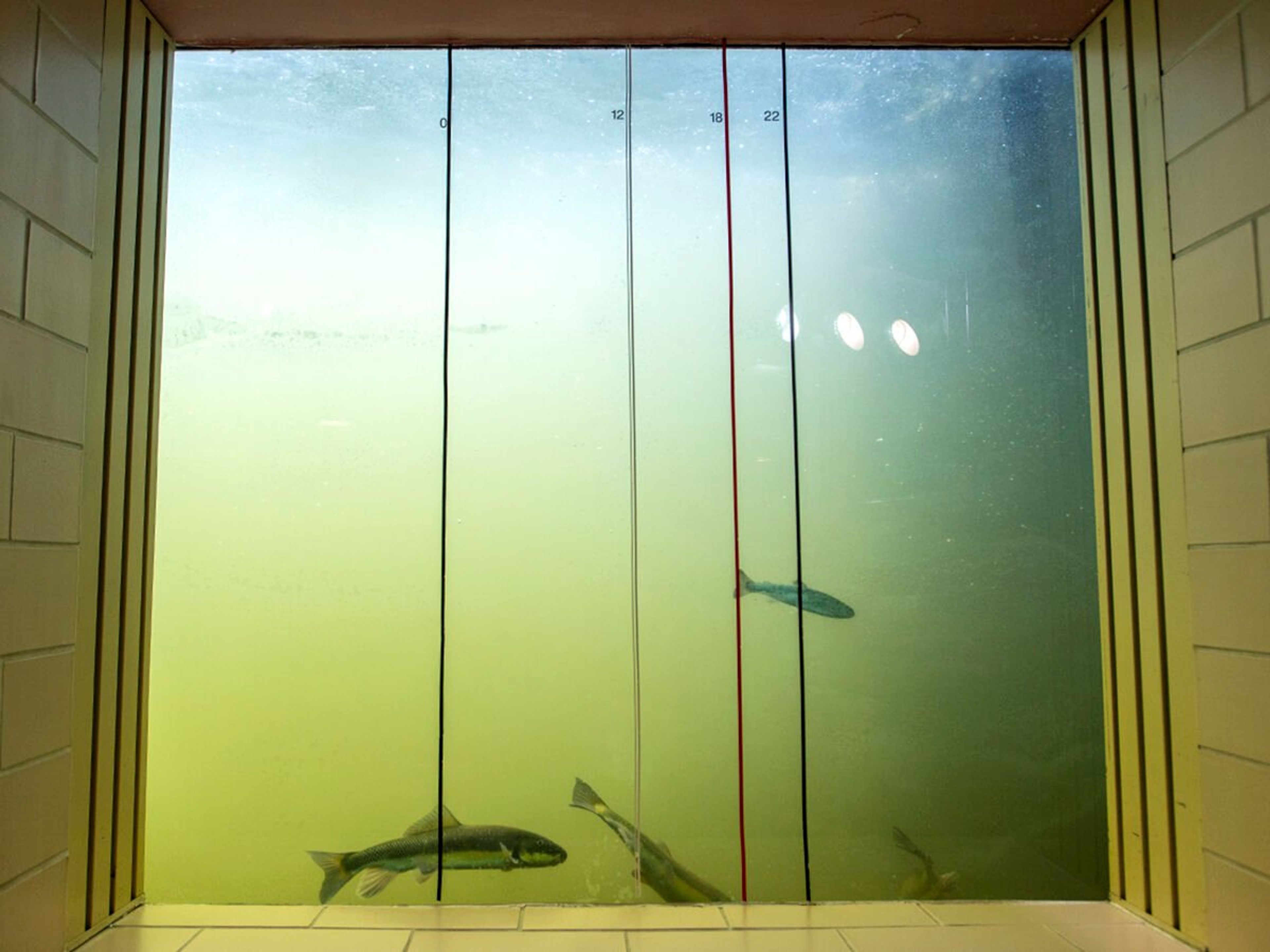Dam study: Additional research is necessary
Port-linked paper says fish are indeed harmed by dams, but that doesn’t mean breaching’s the best answer
Scientists hired by port and shipping interests confirmed some juvenile salmon and steelhead suffer from delayed mortality after passing through the Snake and Columbia River hydrosystem, a key scientific justification for Snake River dam breaching, but said there is significant uncertainty surrounding the phenomenon.
Proponents of breaching four dams between Lewiston and the Tri-Cities have long claimed stress and injury suffered by migrating Snake River salmon as they pass through turbines and fish bypass systems at the dams, as well as migration delays caused by the impoundments, lead many of them to perish soon after reaching the Columbia River estuary and Pacific Ocean. They also say salmon and steelhead from other Columbia River tributaries like the John Day and Yakima rivers, which have to pass only three or four dams to reach the ocean, survive at significantly higher rates than Snake River fish. They argue breaching the dams would greatly enhance juvenile fish survival.
The phenomenon, known as delayed or latent mortality, has arisen out of numerous studies across decades of research. According to some studies, the effect is significant enough that breaching Lower Granite, Little Goose, Lower Monumental and Ice Harbor dams, combined with spill at remaining dams on the Columbia River, would lead to a four-fold increase in returns of adult fish.
But breaching would end tug-and-barge transportation of crops between Lewiston and downriver ports, eliminate hydroelectricity produced at the dams and greatly complicate irrigation withdrawals from the river near the Tri-Cities. The idea remains bitterly controversial but has gained momentum over the past three years — including a partial endorsement from the federal government and a proposal from Idaho Congressman Mike Simpson to breach the dams and spend $33.5 billion to compensate affected communities and industries.
The Inland Ports and Navigation Group hired Mount Hood Environment to review literature on the delayed mortality hypothesis. The scientists said it is real but not well understood.
“We conclude that delayed mortality may be occurring in the ocean as a result of carryover effects from exposure to the Columbia River hydrosystem,” they wrote in a 20-page paper. “However, mechanisms of delayed mortality are not well-defined, and the magnitude is unknown. Furthermore, it is unclear how removal of the lower Snake River dams would reduce hydrosystem-related delayed mortality because the mortality mechanism may be a function of broad-scale habitat changes caused by operation of the entire (Federal Columbia River Power System), not exposure to individual dams.”
They said more research is required to determine the degree to which dam breaching would help Snake River salmon and steelhead. Port officials said the uncertainty is reason to step back from breaching proposals.
“Many of the dam breaching arguments we hear are based on the theory of delayed mortality, which claims that juvenile salmon are weakened as they make their way through the federal dams on the Snake and Columbia rivers, and this affects their ability to survive in the ocean,” said Pacific Northwest Waterways Executive Director Heather Stebbings in a news release. “We want the region to truly understand the science on this matter, and where the gaps in information might be.”
Ian Courter, one of the authors of the document and a principal investigator at Mount Hood Environmental consultants, said the findings are not exactly what port officials had hoped for. For them, he said, the ideal outcome would be a finding that delayed mortality does not exist. Instead, he said it is real but the magnitude is foggy.
“So far as we can tell, that is a huge unknown,” he said. “If it is tiny that means you remove the lower Snake River dams and you don’t really see a major difference in adult fish returns, but if it is larger, you do see a difference in adult fish returns.”
The paper also said what is causing delayed mortality and how it manifests itself needs to be studied further. For instance, Courter said dams on the Snake and Columbia rivers and downstream development have significantly changed the estuary and that could be the cause of delayed mortality. If that is the case, he said breaching Snake River dams will have little effect.
Courter believes the uncertainties can be answered with further studies, perhaps in as few as three years. He suggests researchers study stress levels in migrating fish, examine Snake River fish collected from the estuary to determine if they have discernible injuries, study when Snake River fish arrive at the estuary and study the relationship between estuary habitat and ocean survival.
But he noted, more study can lead to more study.
“The trouble with science is that one question likes to lead to another,” he said.
Science can also be adversarial at times and disagreements are common. That is true in this case. Charlie Petrosky, a retired Idaho Fish and Game fisheries scientist who worked on many of the studies that established the delayed mortality hypothesis, disputes the findings of the Mount Hood Environmental paper. He said numerous studies over several years that have approached the problem from multiple angles and using different data sets all come to similar conclusions — that there is “a high level of delayed mortality for Snake River spring/summer Chinook and steelhead.”
“That is one thing the consultants didn’t really address very well,” Petrosky said. “They mentioned there has been a bunch of research and studies but not that they all strongly support each other.”
In addition to reducing injury and stress, Petrosky noted dam breaching would greatly reduce the time it takes juvenile fish to reach the estuary and ocean. He also dismissed the idea that delayed mortality is caused by conditions in the estuary.
“This would seem to imply that it would have to selectively affect Snake River fish,” he said. “We know the downriver populations are surviving three to four times better, and we have multiple populations we have compared and it is pretty consistent.”
Stebbings said more studies are needed before something as dramatic as dam breaching is tried.
“After 30 years of research, there are many significant questions that remain unanswered regarding the theory of delayed mortality, and we can’t ask our policymakers to make catastrophic decisions such as dam breaching without having all of the information,” she said. “PNWA is choosing to focus on science-based efforts that we know will improve conditions for fish, increase populations, open up habitat, and bring more salmon and steelhead back to the Columbia River Basin. We continue to be committed to this comprehensive approach, and to being part of the long-term solution to salmon recovery.”
Barker may be contacted at ebarker@lmtribune.com or at (208) 848-2273. Follow him on Twitter @ezebarker.







